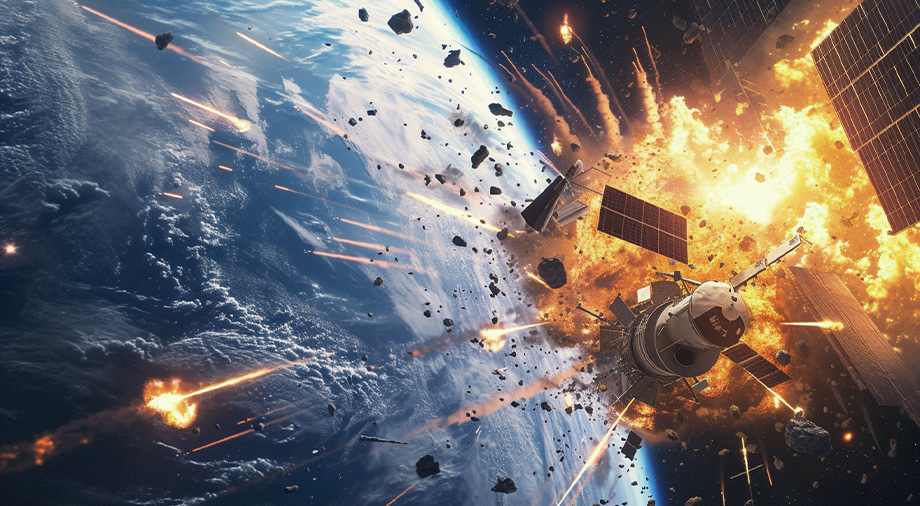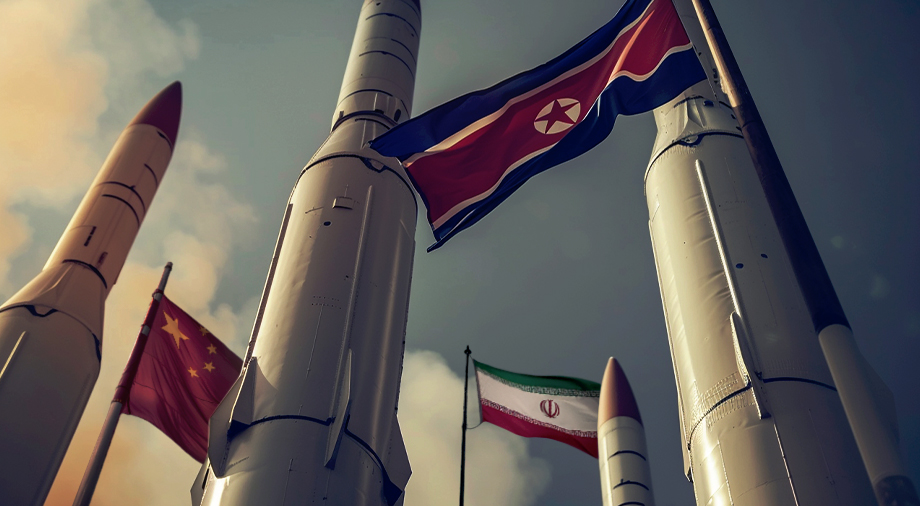Recent national security discussions on Capitol Hill have caused a flurry of concern, and for very good reason. On February 14, Chairman of the House Intelligence Committee Mike Turner announced that he had sent letters to all members of Congress with information about the threatening and destabilizing military capabilities that have appeared in the arsenals of America’s enemies.
Anonymous sources in the White House hinted that Rep. Turner was referencing a Russian attempt to place nuclear weapons in orbit to combat American satellites.
The essence of the threat
Anti-satellite (ASAT) direct ascent weapons have been available throughout human space history and were first tested just a few years after the launch of the first satellite into orbit in 1959.
For their entire existence, ASAT weapons were mainly designed to use kinetic strikes on a target satellite, taking out one satellite per strike. These precise kinetic missile strikes could be supplemented by other methods of counterspace warfare, cyber attacks, radio-electronic jamming, and laser blinding. However, the new practice of launching large satellite constellations (especially for military purposes) could force these missiles to evolve into real weapons of mass satellite destruction.
It appears that this is exactly what is indicated by the latest American intelligence data, which Rep. Turner is asking to be declassified. The Russians are interested in experiments with ASAT nuclear damage. The controlled detonation of a nuclear explosive in space is capable of creating a super-powerful electromagnetic pulse covering a large coverage area. Just one such weapon could potentially cause the loss of entire clusters of satellite constellations, and it is on satellite networks (such as the Transport Layer) that the entire modern American battlefield command and control doctrine is based.
Russian nuclear anti-satellite weapons would most likely come in several forms: there would be direct-ascent nuclear ASAT missiles (launched from the Earth’s atmosphere using ground-based launch platforms or aircraft), along with co-orbital nuclear ASAT (in the form of satellites equipped with low-yield nuclear weapons and able to maneuver towards satellite constellations).
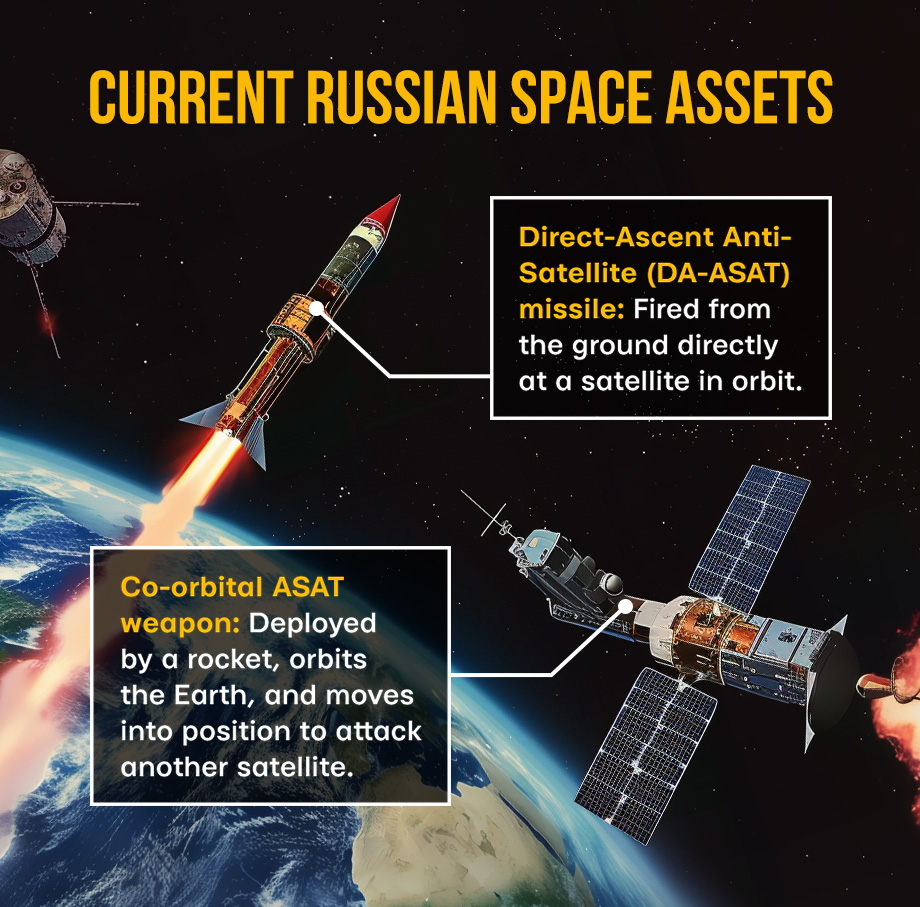
The serious danger from a high-altitude nuclear explosion aimed at satellites in low-Earth orbit (HALEOS) also threatens long-term consequences due to radiation entering the Earth’s atmosphere. Such release of radioactive substances can lead to degradation and further failure of satellite electronics due to excessive exposure to radioactive radiation. That is, by detonating a nuclear charge in orbit, Russia is capable of temporarily making a separate section of it unsuitable for the movement of other satellites (which at the time of the explosion will be at a safe distance and will avoid direct damage).
Moscow already has the experience of placing nuclear-powered satellites in orbit, which can generate additional energy to create electromagnetic interference. However, nuclear-powered satellites pose a much smaller threat, as they are unable to cause a controlled nuclear detonation in space to destroy a large group of adversary satellites.
Moscow’s actual capabilities
Moscow’s practice of constantly intimidating the world with new types of weapons has remained unchanged through almost every Kremlin regime during the last 100 years. But in order to understand Russia’s actual capacity for placing nuclear weapons in space, we need to rely not on the bluff of Kremlin propaganda, but on the published results of training exercises and the existing fleet of Russian delivery vehicles.
Aerial platforms remain Russia’s main means of delivering anti-satellite weapons into orbit, namely the high-altitude multipurpose MiG-31 (NATO designation Foxhound). At least 250 aircraft of this design, in several modifications, are currently in service with the Russian VKS (Military and Space Forces). For our purposes, we are interested in the MiG-31 D, which can be equipped with the 79M6 Kontakt anti-satellite missile, designed to destroy low-orbit space objects. The first attempts to develop this weapon were made during the Soviet Union.
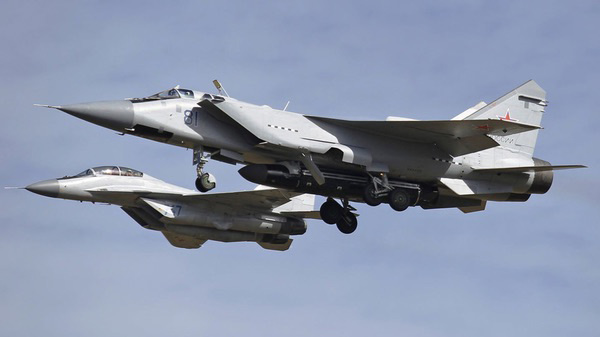
It was probably on the basis of the 79M6 Kontakt that the Kh-47M2 Kinzhal hypersonic maneuverable missiles were developed, which became the main “wunderwaffe” of Russian propaganda. But there is still a significant cause for concern – the Kinzhals have indeed demonstrated a high ability to avoid interception. As of January 2024, according to Ukrainian Air Force Press Secretary Yuri Ihnat, Ukrainian air defense has only been able to shoot down 25 Kinzhal-type missiles (with all interceptions carried out using the American Patriot missile defense system). Another cause for concern is the Kh-47M2’s ability to carry a nuclear warhead, which makes this class of missile a potential candidate for delivering nuclear ASAT weapons into orbit. Kinzhals are carried by the MiG-31K modification.
The MiG-31I modification (abbreviated from “Ishim”) a joint Russian-Kazakh project proposing to use a jet aircraft in conjunction with an Il-76MD command and control plane to deliver 160 kg of payload into an orbit at an altitude of 300 to 600 km. It is not known what stage this modification is at right now (fortunately, not a single test has taken place yet), but the potential ability to deliver a 160 kg warhead into orbit is very worrying. It is also known that the Russians are developing a new version of this jet aircraft – the MiG-41, which is expected to become the successor and main combat vehicle of the Russian counter-space doctrine.
Another potential candidate for deploying nuclear ASAT weapons in orbit is the Nudol missile system, equipped with A-235 anti-satellite missiles, which entered service with the Russian military in 2020.
The development of the Nudol launch platform began back in 1985, but after the collapse of the Soviet Union, the project was suspended and resumed only in 2011. The A-235 missile, which the complex is equipped with, is a modification of the A-135 Amur strategic air defense missile.
In addition to the A-235, the Nudol complex can be equipped with ABM-4 GORGON 51T6 anti-ballistic missiles, whose reported characteristics indicate the ability to hit satellites and other aerospace targets at altitudes from 50 to 1000 km and within a coverage radius of 1500 km. But even such indicators are not enough to destroy some US military satellites – at least with the kinetic types of munitions available today (since, for example, the highest level of the Transport Layer satellite network suggests placing satellites at an altitude of 1200 km).

One potential means of delivering Russian nuclear ASATs into space could be the S-500 Prometheus anti-aircraft missile system or its newest modification, the S-550, which has been in development since 2021. According to the Russian Ministry of Defense, the S-500 air defense systems began to be fielded en masse by the Russian army in 2022 (it was then that the Almaz-Antey air defense concern launched their mass production), although there is no evidence of this. In theory, the new version of the S-500 air defense system is significantly different from the previous generation S-400 and can be considered a full-fledged combat vehicle.
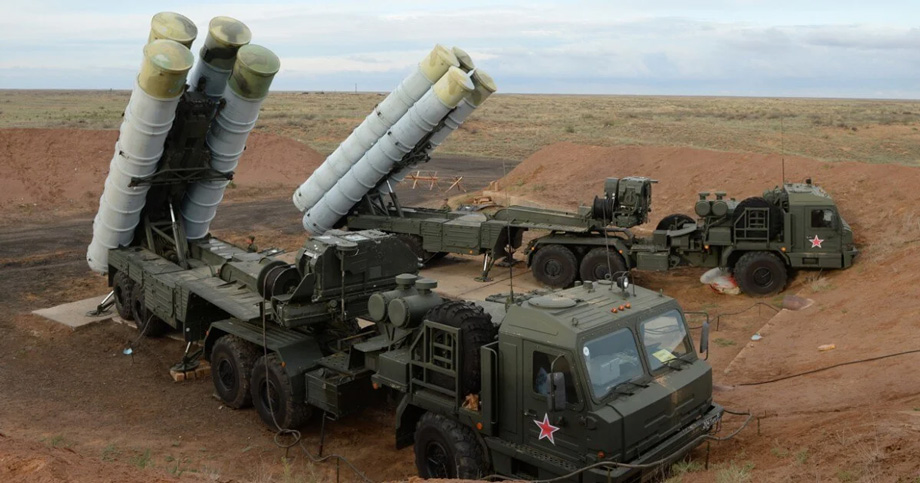
Photo: hi-news
The primary threat to satellites posed by the S-500 lies in the system being deployed in massive numbers simultaneously. Maintaining such ground systems is also much cheaper than maintaining aircraft platforms like the MiG-31. To combat space threats, the S-500 can use 77N6 missiles, available with a conventional or a nuclear warhead. The second option would likely be used to destroy satellites using a super-powerful electromagnetic pulse caused by a nuclear explosion.
On June 21, 2016, Russia tested the 53T6/PRS-1 interceptor missile at Kazakhstan’s Sary-Shagan test site. Despite the fact that it was developed by the Russians to intercept intercontinental ballistic missiles, its warhead can be equipped with a nuclear charge for detonation and generation of an electromagnetic pulse.
The last (and least explored) of the possible scenarios for the destruction of American satellites using nuclear anti-satellite weapons would be carried out not from Earth, but from space. This would involve the latest co-orbital satellites, which are capable of approaching other satellites in orbit and using various methods to intercept and destroy their target. Reports about Russia developing a new co-orbital satellite program, called the Burevestnik (also known as Project 14K168), first emerged back in 2018.
According to the report Space Threat Assessment 2019 released by the Center for Strategic and International Studies (CSIS), Russia has been developing co-orbital ASAT satellites since 2011. The information in the CSIS report coincided with another report from the Safe World Foundation (SWF), which looked at the latest types of space threats.
According to research by Bart Hendricks (one of the leading analysts at SWF), the spacecraft, named Cosmos 2491, 2499, 2504 and 2521, may be part of a Russian constellation aimed at tracking and eliminating other satellites. The newest types of ASAT satellites of the Burevestnik project could be aimed at countering high-orbit probes in geostationary orbit (GEO), and also cause damage to constellations of smaller satellites in low Earth orbit (LEO).
The report also contains information about the coordination activities of Russian and Chinese satellites (SJ-12, SJ-15, SJ-17). This indirectly indicates that Russia and China have many common goals to improve their anti-satellite programs. Almost five years ago, reports compiled by SWF and CSIS warned that Russia and China had made significant progress in developing their own ASAT kinetic destruction systems, laser destruction systems, and anti-satellite electromagnetic pulse weapons systems.
Despite the growing level of danger, Russia’s use of nuclear-capable co-orbital ASAT satellites still remains rather pointless, since the country has ground-based capabilities to cause a controlled nuclear explosion in Earth’s orbit, which are predictably much more accessible and cheaper. In addition, we should not forget that any nation possessing nuclear weapons can theoretically carry out a controlled detonation in space, which does not require specialized anti-satellite weapons or technologically complex platforms. However, the damage as a result of such actions is predicted to be significantly less.
Transferring nuclear deterrence to orbit?
When the Outer Space Treaty (OST) was concluded in 1967, the issue of deploying nuclear weapons in orbit seemed to be finally resolved. One of the key provisions of the OST prohibited the placement of weapons of mass destruction in orbit, as well as any deliberate actions leading to the clogging of orbit and subsequent denial of its use. When the document was signed by the two leading owners of nuclear arsenals in the world, the US and the USSR, hope arose for the economic prosperity of the space sector, which would not be affected by military conflicts breaking out on Earth.
However, if the Russians really have ready-made developments to destroy orbital vehicles with nuclear weapons, this calls into question the agreements of the last century. In addition, Russia has more than once openly and demonstratively neglected the provisions prescribed in the OST. The latest such precedent was the test of the A-235 anti-satellite kinetic missile launched from the Nudol mobile ground-based platform in November 2021. At that time, the Russians tested their ASAT weapons against the decommissioned Soviet satellite Cosmos 1408 (built, by the way, in the workshops of Ukraine’s main aerospace enterprise, the Dnipro-based Pivdenmash).
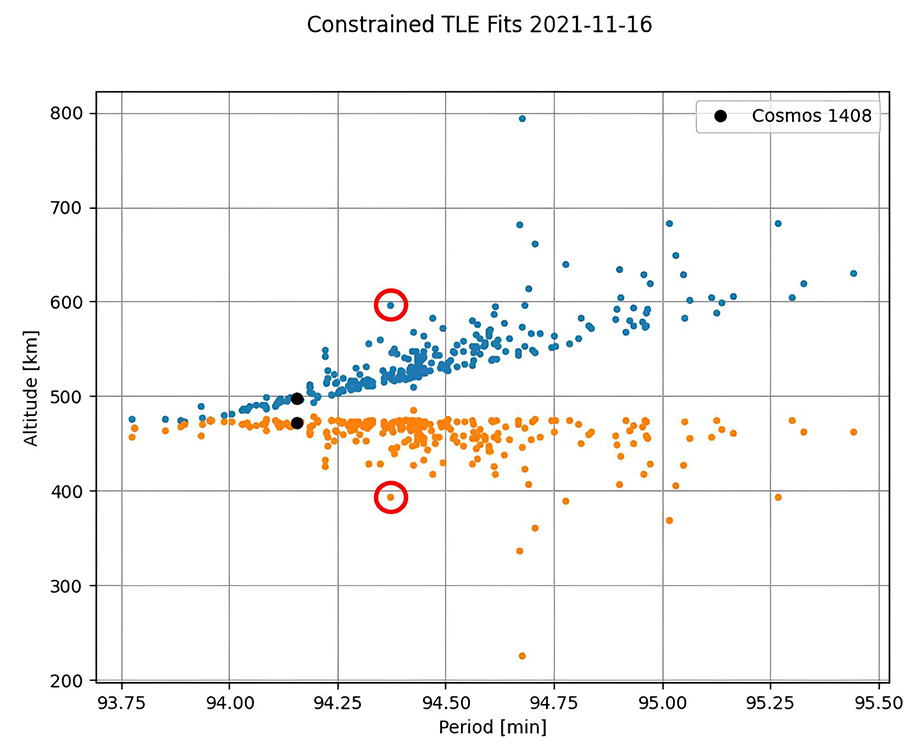
The launch of the Russian direct ascent ASAT missile created 1,500 small pieces of debris when impacting the Cosmos 1408 (despite the fact that the rocket contained only a kinetic warhead). Pieces of the crushed satellite went into orbit and even threatened to collide with the International Space Station. The crew of the ISS was urgently given evacuation instructions, so the cosmonauts sat in the evacuation capsules for several hours in a row, waiting for rescue in the event of a possible destruction of the station. Fortunately, that time the wreckage flew harmlessly past the space station.
In fairness, it should be noted that Russia is not the only country to have conducted tests of ASAT weapons in orbit. Three countries had already preceded it in the 21st century, namely, China (2007), the US (2008), and India (2019). However, it was the Russian ASAT missile that caused the most damage to outer space.
As all areas of our lives (including the military) become increasingly dependent on satellites, attempts by other countries to target them are quite worrying. This is aggravated by the fact that there is currently no reliable legal mechanism to prevent such attacks, and the policy of strategic rivals suggests that such rules will not be formulated any time soon due to the extreme divergence of views of the conflicting parties.
The U.S. is also limited by certain obligations to ban direct ascent ASAT weapon tests approved by the Biden Administration. However, the perceived threat from the US’s main strategic opponents may force the Americans to move away from this narrative.
Obviously, the US response to the new threat will not be long in coming. Several Pentagon departments are seriously concerned not so much with the response, but with quick recovery from a possible Russian nuclear attack in space. Increasing the survivability of US military satellites in space is the first (but not the last) step in this direction. Another possible response would be to consolidate US military allies and begin developing joint actions to predict, track, and respond to this kind of nuclear threat.
Another likely scenario is the transference of nuclear deterrence into orbit. This may manifest in open commitments of the United States and its allies to use nuclear weapons against the satellites of Russia and China in the event of such a counter-space confrontation on their part. However, the question remains open of how exactly the Americans will be able to respond in this way after losing their own satellite navigation, target designation, and awareness of outer space, which could be neutralized by a potential nuclear explosion.
But whatever the American response, it seems time for the world to finally come to terms with the collapse of the global security system. By demonstratively disregarding past agreements (namely the Intermediate-Range Nuclear Forces Treaty, the Open Skies Treaty, and the New START strategic arms accord), Russia is creating a precedent for expanding the arms race into orbit. This, in turn, is an extremely blatant signal about the final end of past legal obligations between the United States and Russia to limit the production of offensive, missile, and anti-satellite weapons, and the demilitarization of space in general.

